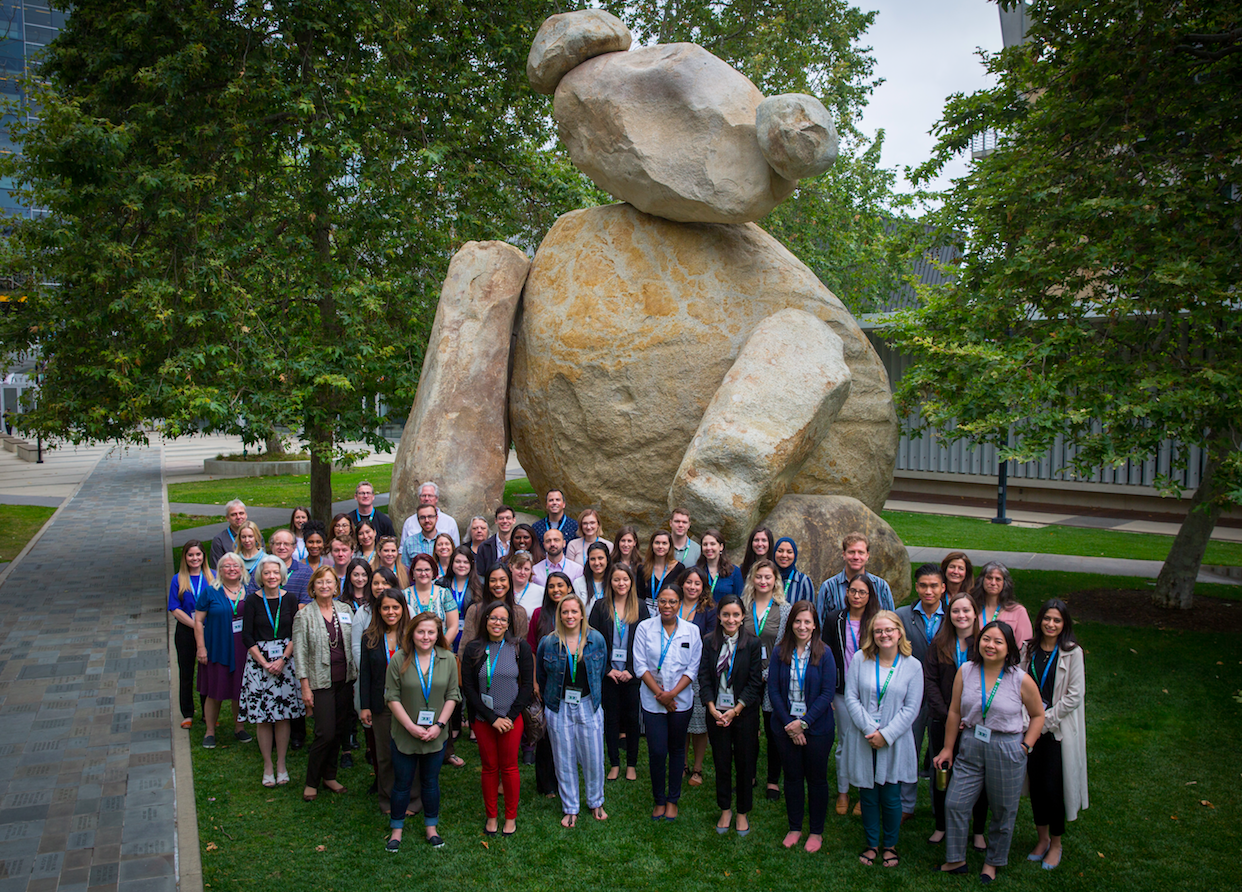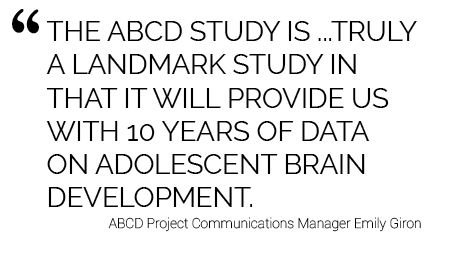Researchers Studying the Adolescent Brain Meet to Discuss Research Goals and Strategies
By Trisha Kholiya
As children grow up, we can’t help but worry about their development. We check standard heights and weights charts to constantly monitor our children’s growth.

Now, imagine this: What if we could not only track the physical growth of our children, but also, compare our children’s brain development to national standardized charts that depict normal brain development of children and adolescents? These charts would identify individual developmental trajectories and the factors that can impact them.
That’s what the Adolescent Brain Cognitive Development (ABCD) study hopes to do. As an initiative by the National Institutes of Health (NIH), brain research across the country is being funded to help understand adolescent cognitive development. During the last week of May, ABCD held a conference at UC San Diego’s Qualcomm Institute, where the group discussed the progress of its study and went over current and prospective protocols so researchers could understand what influences brain development in children.
“The ABCD Study is the largest long-term study of brain development and child health in the US. It is truly a landmark study in that it will provide us with 10 years of data on adolescent brain development, with almost 12,000 children enrolling in the study,” ABCD Project Communications Manager Emily Giron said. “The ABCD Study has data collection sites at 21 different universities and institutions across the US, as well as a Coordinating Center and Data Analysis and Informatics Center at UCSD.”
The ABCD study emerged from a lack of understanding of the dramatic changes that occur in times of adolescent development. Adolescence is associated with rapid increases in knowledge and risk-taking, but it is also when the earliest signs of serious mental disorders are diagnosed. Past studies have collected miscellaneous data, but the small scope and size of the studies, methodological inconsistencies, and enrollment bias have limited the impact of previous investigations.
The ABCD study research plan calls for the enrollment of 11,500 youth ages 9-10 using a school-based recruitment model, and the cohort will be followed for 10 years. It will also include the administration of health and behavioral assessments annually, and use multimodal neuroimaging as part of comprehensive assessments biennially. Biological samples such as saliva, hair and blood will provide genetic, hormone and drug exposure information.
 The research will also examine the role of genetics and epigenetics on development through analysis of data collected from 800 twin pairs.
The research will also examine the role of genetics and epigenetics on development through analysis of data collected from 800 twin pairs.
Most importantly, ABCD follows an open science model. They plan to collect and store their data as a resource for others to understand and analyze the data now and in the future. The data that they collect will be made publically available to approved researchers on the NIH-hosted website here.
During the conference, investigators spoke about modern-day topics relevant to their research study, including topics on gender identity, culture, and mobile technology.
“The ABCD Train the Trainer meeting is a unique opportunity for RAs and coordinators from our 21 study sites to come together and learn about updates to the study protocol, and share their experiences, questions, and best practices with one another,” Giron said.
This research should lead to not only a standardized model to understand normal brain development in youth, but also help identify more personalized interventions to help protect and support youth during the difficult adolescent years.

